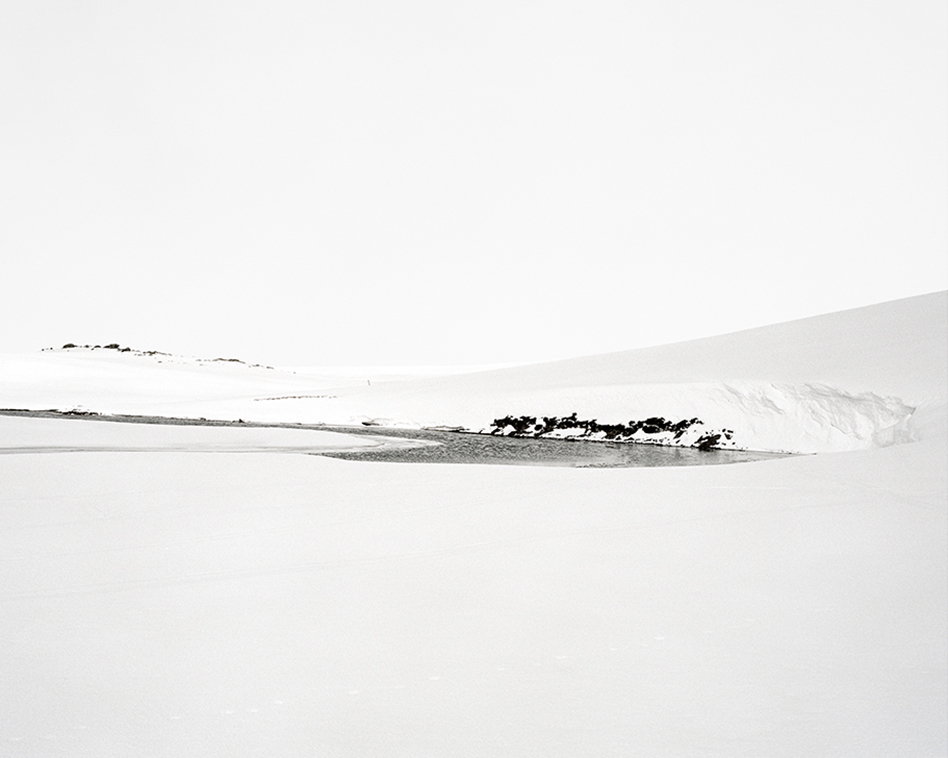(22.08.2022)
Sitting in my warm cozy studio in Melbourne, I contemplate the Australian alpine region. Last journal entry, I hinted that my body needed a rest after many days of touring. A wise move, the diagnosis of a sudden mishap was a slipped disc in the lower vertebrae.
Giving it time to rest, two weeks ago, I traveled back up to Tawonga huts for a long day trip attempting to photograph the Jagged East face of Mt Feathertop. Weather, although predicted for clear skies, had an alternative schedule; the mountain and most of the 10km trek to the intended photographic location were blanketed entirely with clouds.
Along the journey through, I observed the terrain change. The landscape that was quite familiar a few weeks ago is now utterly foreign to the eye. Wind drifts that weren’t present are now the size of a small truck and easily skied into, given the environmental circumstances.
The residency at BCSC started with past experiences beginning in Arctic Svalbard, the Japanese Alps, Alaska, and Canada, all of which gave me an understanding of travel and fieldwork in the winter environment. Yet, as I come out the other side of the residency, in some ways, I see the Australian alpine region as just as severe, completely unpredictable!
This unpredictability is caused by the discovery of drastic micro-seasonal changes, freezing, melting, and freezing scenarios that usually only present themselves in the spring months, beginning in early winter. As a result, the environmental habits of springtime are starting to cause havoc to its inhabitants, and the seasonal confusion impacts all who call the Victorian Alpine region home.
